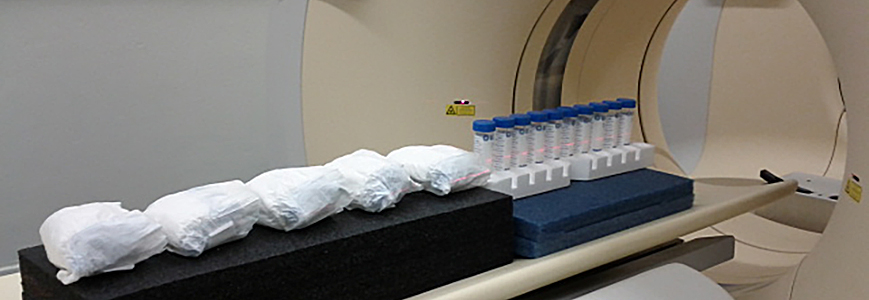Fighting Cancer with Diapers

Disposables Help Improve Diagnostic Imaging
One common technique used for cancer screening is X-ray computed tomography (CT), which takes a series of cross-section images of the body. But the medical usefulness of those images is only as good as the scanner’s ability to measure tumors accurately. So researchers test multiple CT imaging methods before they are used in clinics, employing standard artificial “phantoms” – stand-ins for human tissue with spots that mimic real tumors – to evaluate CT performance.
Traditionally, this has been done by imaging plastic phantoms. But the complex shapes and fuzzy boundaries of real tumors have been difficult to capture in a plastic phantom. To improve that situation, NIST scientists hit upon an unconventional solution: injecting water into disposable diapers. The resulting lumps closely resemble the structure of a tumor in tissue, and they can be “grown” by simply adding more water.
That approach could help resolve a decade-long question about CT imaging: When tracking tumor growth, is it better to measure length or volume?
The standard approach determines a tumor’s size from its largest measured length in any CT slice. Change in mass is deduced from change in length. Volumetric measurement, by contrast, is a relatively new technique that combines all the two-dimensional slices to form a three-dimensional volume.
To compare the two methods, the NIST team loaded multiple diapers with a small initial volume of water and imaged each diaper with CT. They then repeatedly injected more water and re-scanned each diaper, weighing them before and after to precisely determine the amount of water added. The result: The volumetric method was five times more accurate in estimating mass.
That’s a lot to absorb.
Contacts
-
PML webmaster

